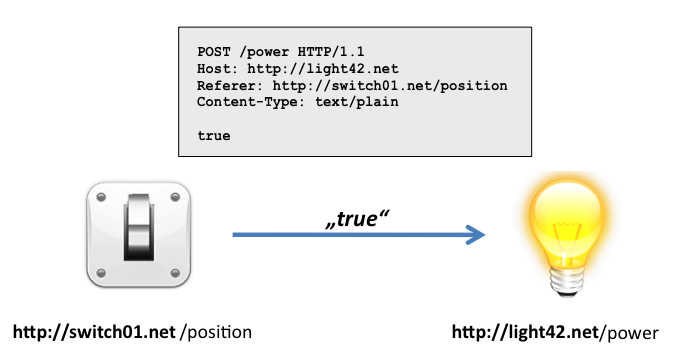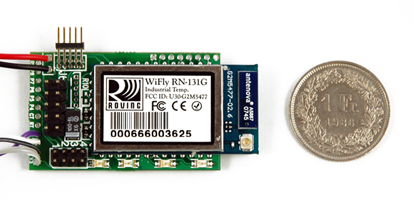|
Alltagsgegenstände an das Web anbinden / Connecting everyday objects to the Web (M)Status: Abgeschlossen(English version below)Dein Lichtschalter hat einen HTTP Server? Deine Glühbirne versteht POST? Deine Haustür ist REST-enabled? Dein (physischer) Briefkasten hat eine URL, die Du gleich für ein Mash-Up mit Deinem Natel verwendet hast? Wenn Du wissen möchtest, wo denn das ganze Geld aus Deinem Geldbeutel hingegangen ist, schaust Du dessen RSS-Feed unter https://example.org/stuff/wallet/balance@history.rss an? Deine Türklingel verwendet URL-Callbacks, um Besuch bekannt zu geben? Du hast den iCalendar-Feed Deines Kühlschranks abonniert, der Dich benachrichtigt bevor etwas darin schlecht wird? Deine Zahnbürste hat 3 Follower bei Twitter? Deinen Facebook-Status setzt Du automatisch per Mash-Up mit Deinem Badezimmer, Deinem Bürostuhl und Deiner Lieblingstasse?  Klingt unmöglich? Wir haben die Hardware dazu und möchten genau das realisieren!  In dieser Arbeit sollen eine Reihe von Alltagsgegenständen an das "Web der Dinge" angebunden werden. Bei diesem Ansatz werden Web-Konzepte wie REST, HTTP, HTML, URLs, usw. auf physische Gegenstände angewandt. Durch die Anbindung ans Web kann man Dinge nicht nur von jedem Web-Browser abfragen und gegebenenfalls auch ansteuern, sondern auch programmieren und mit der riesigen Infrastruktur des WWWs kombinieren und dabei deren Dienste und Daten nutzen. Dazu sollen kleine, WiFi-fähige Sensorknoten programmiert und in Alltagsgegenstände integriert werden. Die benötigten Dienste (Webserver, etc.) laufen dabei direkt auf den Knoten. Die Arbeit umfasst sowohl die Entwicklung von Software als auch kleinere Arbeiten an Hardware. Das Ziel ist, einige der oben beschrieben Szenarien am Ende der Arbeit demonstrieren zu können. Wenn Du interessiert bist, dann melde Dich einfach bei Benedikt Ostermaier. Your light switch has an HTTP server? Your light bulb understands POST? Your front door is REST-enabled? Your (physical) mailbox has an URL, which you use for a mash-up with your mobile phone? If you want to know where you spent the money from your wallet, you take a look at its RSS feed at https://example.org/stuff/wallet/balance@history.rss? Your doorbell announces visitors via URL callbacks? You are subscribed to the iCalendar feed of your fridge, which notifies you before something perishes? Your toothbrush has 3 followers at Twitter? You set your Facebook status automatically, using a mash-up of your bathroom, your office chair and your favorite cup?  Sound impossible? We have the hardware and want to get this started!  In this thesis, a set of everyday objects should be connected to the "Web of Things". In this approach, physical objects are connected to the Web using concepts like REST, HTTP, HTML, URLs, etc. This enables not only accessing and controlling things using a simple Web browser, but also programming and combining them by exploiting the huge infrastructure of the WWW, including its services and data. For this, small WiFi-enabled sensor nodes need to be programmed and embedded into everyday objects. The required services (web server, etc.) are executed on the node itself. The scope of this projects includes software development as well as minor work regarding hardware. The goal of this thesis is to realize some of the above-mentioned scenarios and demonstrate them at the end of the project. In case you are interested, please contact Benedikt Ostermaier. Student/Bearbeitet von: Andreas BörnertContact/Ansprechpartner: Benedikt Ostermaier |
|
|